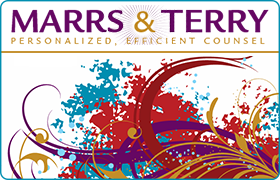Bark River Bankruptcy & Debt Lawyer, Michigan
Sponsored Law Firm
-
 x
x

Click For More Info:
-
Marrs & Terry, PLLC
6553 Jackson Road Ann Arbor, MI 48103» view mapBankruptcy & Debt Personalized, Efficient Counsel
Marrs & Terry, PLLC have been helping individuals face a variety of legal challenges, including bankruptcy, estate planning and administration, and family law.
800-862-7221
Jeremy John Nastoff
Contract, Business, Credit & Debt, Personal Injury
Status: In Good Standing Licensed: 14 Years
Michele J. Hebner
Estate, Divorce & Family Law, Business, Bankruptcy & Debt
Status: In Good Standing Licensed: 25 Years
Norman P. Moore
Bankruptcy & Debt, Divorce & Family Law, Estate, Criminal
Status: In Good Standing Licensed: 31 Years
Daniel R. Degrand
Commercial Real Estate, Industry Specialties, Business, Bankruptcy
Status: In Good Standing Licensed: 51 Years
John M. Bergman
Workers' Compensation, Criminal, Contract, Bankruptcy, Wrongful Death
Status: In Good Standing Licensed: 50 Years
Thomas L. Smithson
Criminal, Native People, Civil & Human Rights, Collection
Status: In Good Standing Licensed: 56 Years


 Tricia Terry Ann Arbor, MI
Tricia Terry Ann Arbor, MI AboutExperienced Michigan Lawyer
AboutExperienced Michigan Lawyer Articles
Articles
